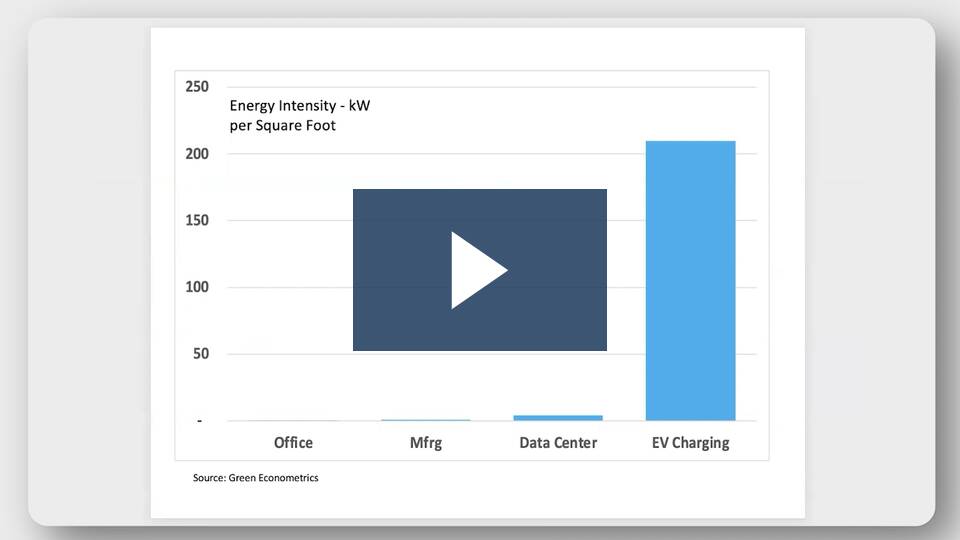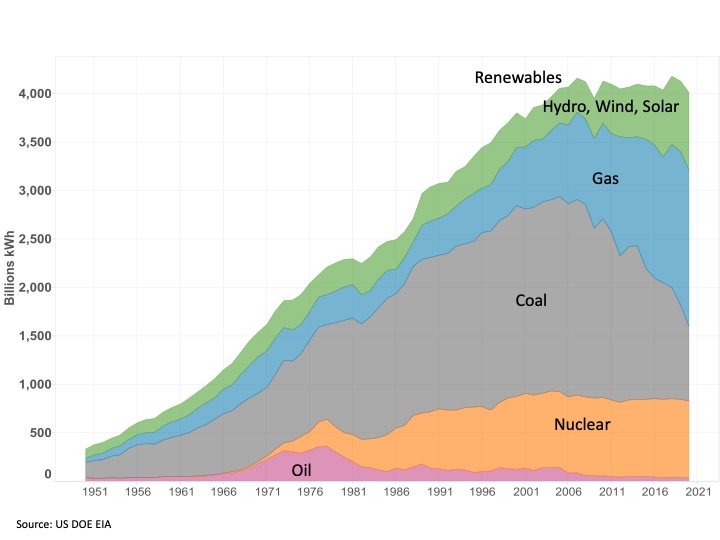Energy Transformation Why EVs will Impact the Utility Grid

Energy Transformation: Why EVs will Impact the Utility Grid – MarketScale
With the bipartisan National Electric Vehicle Infrastructure (NEVI) funding fast approaching, what are the implications on energy demand and the utility grid and why is EV charging compounding the complexities of grid transmission and distribution?
Currently EVs account for about 1% of the global vehicle market and according to EV Adoption, there are approximately 2 million EV on the road in the US. According to the Department of Transportation’s Federal Highway Administration, the average vehicle travels approximately 13,500 miles annually and EV efficiency is roughly 3.5 miles per kWh suggesting annual energy consumption of 3,870 kWh. According to the DOE Energy Information Administration, the average US home consumes roughly 10,900 kWh a year. Therefore, an EV would potentially account for the 35% of the average US home’s electric usage. Most homes can be equipped with a Level 2 EV chargers (240 volts / 50 amps) mitigating any grid impact
EV Charging Grid Impact
Figure 1 EV Fast Charge Energy Intensity

Source: Green Econometrics
The issue is EV charging is energy intensive at the point of charge. A typical Tesla charging stall with 175 kW and Electrify America with 350 kW is the equivalent of a 100,000 square foot commercial building in a box. Huge demand loads in distant locations create pernicious conditions for utility lines and equipment. Utility transmission and distribution lines supplying power will typically need upgrading particularly in less populated areas.
With only 2 million EVs on the road, EV would consume approximately 7.9 billion kWh annually or less than 1% of the US electric production of 3,980 billion kWh. That seems rather small in comparison to data center consuming roughly 73 billion kWh or crypto-mining including Bitcoin at 91 billion kWh. So why the concern about expanding the electric production and infrastructure to support EV charging?
The Electric Grid
Aside from capital, two factors limit EV charging infrastructure deployment. First is production capacity and second is distribution and transmission to reach rural areas and along the interstate. As EV popularity grows to half the US vehicles electric production will need to increase 15%.
Currently electric generation is highly dependent on natural gas as opposed to carbon intensive fuels such as coal and oil. Nuclear expansion might be considered for generation but carries its own set of issues such as disposal. Renewable energy (RE) such as solar and wind appear promising to expand electric production but introduce complexities to grid transmission and distribution because they are intermittent by nature and generate direct current (DC).
Figure 2 Electric Generation by Source

Source: DOE Energy Information Administration
Two important factors in grid transmission and distribution are frequency and reactive power. Both of these are critical in maintaining grid resiliency and stability. Grid transmission and distribution are maintained with alternating current (AC) at a frequency of 60 hertz (Hz). To maintain stable 60Hz, the rotating motion of gas and hydro turbines produce stable rotation at 60Hz frequency.
Solar and wind produce direct current and therefore needs to be converted to AC before connecting to the electric grid. Solar and wind have no inertia to maintain 60Hz frequency. Abrupt changes in energy demand (building load or RE injection) create frequency imbalances and voltage drops that can cause damage to equipment and grid infrastructure. Voltage drops cause overheating of equipment and grid transmission lines for the utility and the customer.
Reactive power is part of the magnetic field that surrounds electric current flow and most typically is used to start large motors. Long utility transmission lines facing increasing power loads will consume reactive power which leads to voltage drops causing overheating and damage to cables and equipment. EV charging stations in rural areas and along the interstate require long transmission lines that require reactive power to maintain voltage and stability.
The NEVI Program takeaways: One mile from Interstate exit and 50 miles apart with US DOT providing $5 billion in state funding to construct and install 500K EV charging stalls. Therefore, to support long-distance high-capacity EV load, energy storage devices and smart DC to AC power converters will play a crucial role in stabilizing the grid particularly with intermittent RE energy supply.
Smart distributed energy resources (DER) are critical technologies that not only support grid stability though frequency, voltage and reactive power optimization but facilitate integration with RE. Extending storage capacity to EVs such as vehicle to load (V2L) capabilities can potentially be used to offset peak demand and better manage demand response initiatives.
Take Aways
- EV charging requires high-capacity power- a building in a box
- EV charging impacts long distance grid transmission
- RE is needed to support growing electric demand
- Energy storage and DER are needed to support RE and grid stability
Related Posts